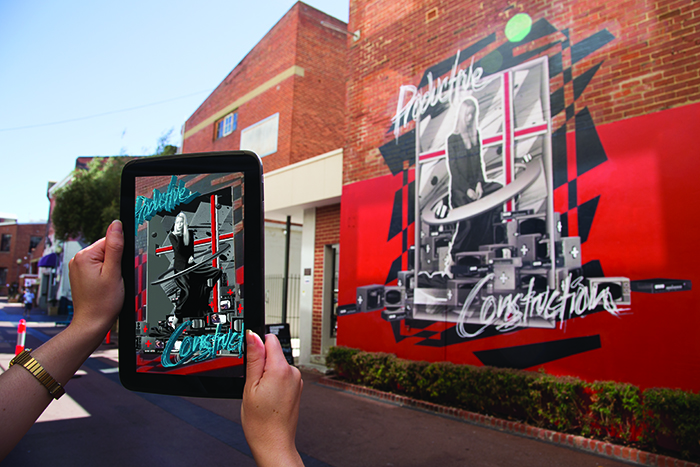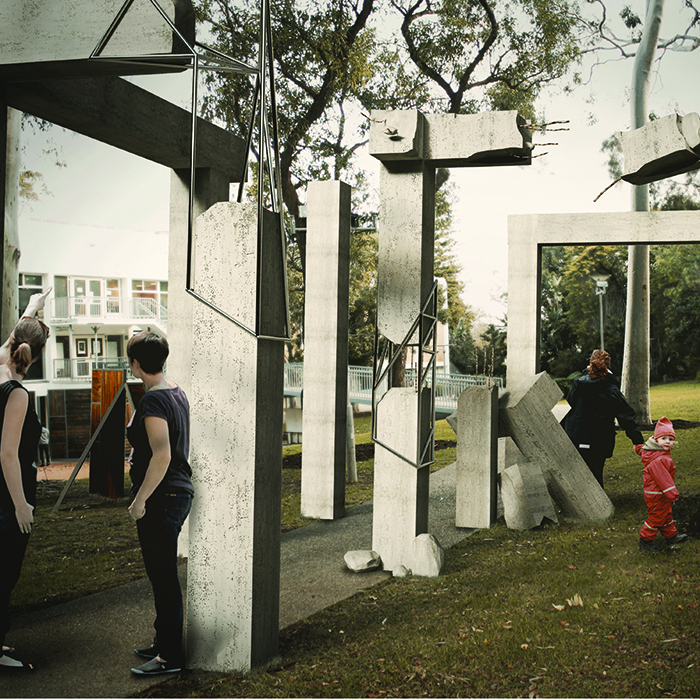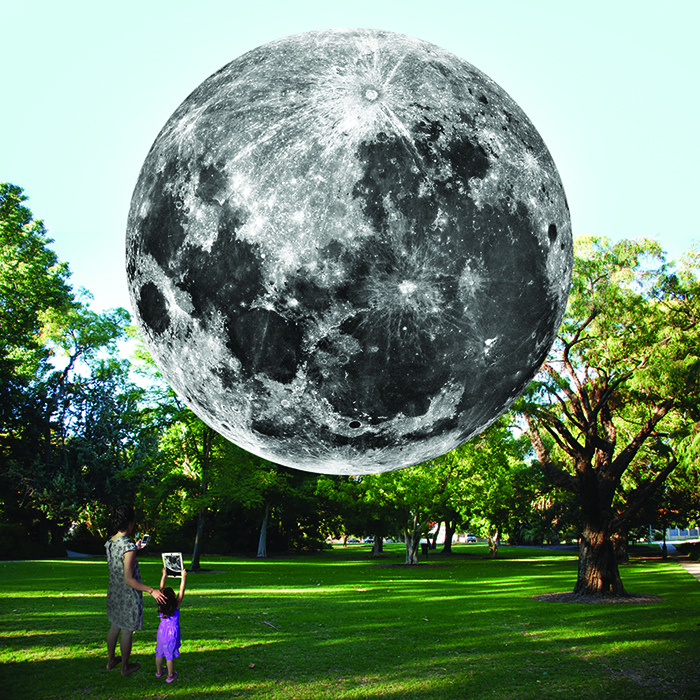Incorporating technology into their public work, a new breed of artists is creating immersive visual experiences that play with our perception of reality.
With events such as Vivid Sydney lighting up city streets, and digital mega-murals like the Horn of Plenty turning heads in Rotterdam, technology-infused art is clearly enjoying a rapid rise across the world. And Perth is keeping up. Just look at Re+Public's black-and-white poster, pasted on a wall in Wolf Lane for FORM's PUBLIC art campaign.
To the naked eye, it appears as a woman sitting on a stack of computer monitors, but thanks to a downloadable app, it turns into a digitally enhanced, animated image – the woman moves, the disc around her starts to spin, and all of the computer screens simultaneously activate in bursts of colour.
"We create murals which come to life when you interact with them using an Augmented Reality (AR) application we have developed," Re+Public artist and co-creator Jordan Seiler explains, "turning a 2D static image into a 3D moving and interactive experience."

Re+Public's interactive poster in Wolf Lane.
AR technology allows you to view interactive videos that digitally alter the environment around you. Those images do not necessarily have a 'real' physical presence, existing only when activated by a device like a smartphone or tablet.
"AR has the ability to be interactive and participatory in a way that common public art like sculpture and murals cannot, by allowing users to help create the content they see through their own participation," says Jordan. He and his team are among the first to blend this technology with artwork, putting up posters that can be enhanced with the tap of a screen in New York and Brussels, and on bus shelters and walls along Murray Street and Wolf Lane.
A number of WA creatives, too, are using digital technology to produce new visual experiences. Chris Nixon's latest collaborative work, Somewhere Our City, was installed at the Perth International Arts Festival earlier this year: children would colour in templates, insert them into a box and watch them reappear as a digital animation before their eyes.
"I think the fact that you have no idea how it's made or works can be a really powerful experience," Chris says. "I love the idea we can create an illusion of magic with our work. If we can make an adult feel like a kid again and play – that's the dream."

Concepts for Moon Calendar by Abdul-Rahman Abdullah, and Rebuilt Ruin by Joshua Cobb-Diamond (above), both part of the Subiaco
pARk exhibition.

Chris says immersive platforms such as AR merge physical and digital spaces, allowing people to connect to public art in more accessible ways. "We're all hungry for exciting and engaging content, and I love the idea that you can experience a story or a piece of content across multiple platforms. I think we'll see a lot more immersive and interactive installations using technology, as the barriers to expensive technology lower and public awareness increases."
Gemma Weston, who curated Australia's first Augmented Reality art exhibition – Subiaco pARk – as part of the 2015 Perth International Arts Festival, agrees.
"There used to be this attitude around new media where it was framed as being the successor to traditional mediums, and was portrayed in a very futuristic sci-fi way, but that attitude has really shifted," she says. "Now there seems to be a much greater understanding and interest in how different mediums interact and co-exist, perhaps because they do so so regularly in our daily lives already."
However, Gemma realises AR and technology-infused art is still quite niche. "I think perhaps because making it is very specialist, and it has certain viewing limitations based on the hardware and software used to view it. There are a lot of variables, like which operating system you're using – Apple, Android or Windows – and the size and capability of your device."
And then there's the issue of accessibility, Jordan says. "Technology-infused art is only accessible to those with the necessary technology to view it. There is a real barrier to entry, but we believe that the ubiquity of smart devices and other wearable technology will continue to make this type of work more accessible at a rapid pace.
"As these devices we keep in our pockets and hold in our hands migrate to other parts of our bodies and become wearable tech, we see AR becoming much easier to experience, and so much more prevalent in art."